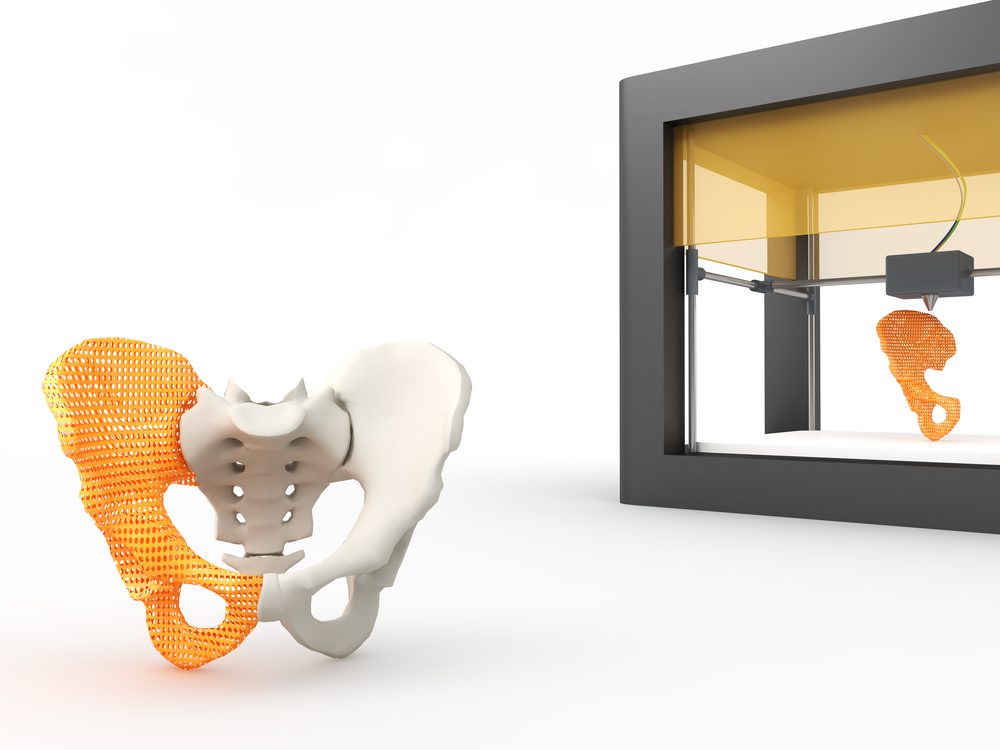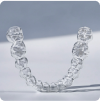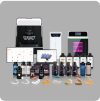
The Future of Medical 3D Printing
Advancements in 3D printing technology have continued to revolutionize the medical field as its role in modern medicine gradually becomes more commonplace. 3D printing is becoming a more accessible and economical route for medical innovation. Combining industrial 3D printers with durable materials and easy-to-use software greatly expands medical device applications and simplifies custom medical device production workflows. . Medical facilities can use 3D printers to create devices in-house for better patient experiences and faster service or outsource to trusted and certified local manufacturers.
Here is a brief introduction to the vast application space for medical 3D printing and a description of the transformation the medical sector will experience as medical 3D printing adoption accelerates.

Exploring the Future of Medical 3D Printing Applications
Additive manufacturing allows medical research and development to reach new heights much faster than using conventional prototyping and production methods. Whether 3D printing in-house or with a local manufacturer — workflow, from idea, scan, or diagnosis to production — is faster, simpler, and more expansive in meeting design and function demands.
While most of the following 3D printing use cases are already growing in adoption and improving at an accelerating pace to revolutionize the medical industry with 3D printing.
Medical Devices
One of the main goals of medical research and development is to bring ideas to volume production faster, more efficiently, and more economically. Utilizing 3D printing technology allows researchers to bring their innovations to market faster than traditional manufacturing. The following medical devices are a small fraction of the ones currently being developed and produced:
- Surgical instruments customized for specific surgical procedures and patient anatomies.
- Translucent or colored hearing aids customized to the patient’s scan for improved comfort and functionality.
- Advanced, biocompatible scaffold implants enhance the regeneration of complex tissues like bone and cartilage with a single implant.
- Patient specific3D printed anatomical models printed from MRI, X-ray, or CT Scan for faster, more accurate, and automated production.
- Medical implants, such as reconstructed airways printed from patient scans, are made from bioresorbable material that allows them to be absorbed during the patient’s healing process.
- Custom eyewear made to fit exact facial structure based on patient scans achieves better fit, lighter weight, increased durability, and design tuned to customer preference.
- Surgical models representing patient anatomy aid surgeons in planning difficult procedures, reducing the amount of time a patient spends in the operating room.
These innovations reduce surgical times and patient complications, expedite and enhance patient recovery, improve outcomes, etc. The more 3D printing technology advances, the faster these designs are created or printed based on patient scans and the more hospitals and doctors will adopt 3D printing as a production solution.
Faster patient treatment and treatments tuned to their condition anatomy improves patient outcome and reduces patient recovery time. Making same-day devices while the patient is in the office is becoming a much more achievable goal for the future of medical 3D printing. Additive manufacturing also consolidates parts into a single-print piece for much faster production further improving patient outcomes and quality of life.
Prosthetics
3D printing prosthetics offer accurate, patient-specific products that have increased ergonomics and comfort for much better patient outcomes than prosthetics made through conventional processes. With high-quality resins, designers can tune prosthetics for elastic or rigid properties as necessary to achieve high performance, lightweight, support, and comfort. For instance, prosthetic feet made from patient scans are easily tuned to match the performance of the original body part and match the patient’s normal gait. 3D printed prosthetics are more durable than foam and are created much faster than traditional prosthetics, reducing a patient’s recovery time by getting the prosthetic much quicker and reducing the chances of causing other medical issues due to performance mismatch.
Braces
Braces are easily customized to meet the need of the patient’s diagnosis, whether it’s for scoliosis or other orthopedic stabilization and/or rehabilitation. Braces designs can fit exact specifications dictated by patient x-rays and physician feedback. Advanced 3D printers, like the Lux 3Li+, allow full volume single prints of both child and adult-sized braces, and advanced, tough resins create highly durable braces that can withstand up to 1,000 rounds of being opened and closed.
Casts
Casts are another medical product that benefits from the scan and print workflow 3D printing provides. It allows both in-house and local production for accelerated patient recovery.
Using cutting-edge resin material creates water-proof casting that patients can easily clean and shower with without damaging it. 3D printing also allows casting with swollen limbs, unlike traditional casting. Once the swelling goes down, the 3D printed cast is easily modified with heat and reshaping instead of requiring a new printed cast.
Medical Insoles/Orthotic Footbeds
3D printing introduces same-day production for medical insoles that are accurate and customized to the patient based on 3D scans, pressure plate data, and doctor assessments. Using generative design software, LuxStudio, lattice structures achieve rigidity or flexibility by adjusting throughout the entire insole for the exact amount of comfort and support the patient needs. Podiatrists can scan patients and make design adjustments before finalizing.
3D printed diabetic footbeds provide far better breathability and support to improve wound healing. Patients receive their custom footbed faster than with traditional orthotic manufacturing. They are durable enough to last much longer than their traditional counterparts so that patients can avoid paying out-of-pocket for replacements and ensure continued benefits to speed up recovery.
Leading Medical Innovation with LuxCreo
Smart Factory 3D printing allows for increased mass customization of products with faster production times and scan-to-print workflows. Simplified 3D printing workflows make in-house or local manufacturing at Smart Factory possible, further decreasing turnaround times for medical products. LuxCreo provides integrated Smart Factory 3D printing solutions that provide all of those benefits and continually improve to make this new manufacturing process more accessible to hospitals, doctors, and patients.
With industrial-grade Smart Factory 3D printers with large build areas for higher throughput and easy part consolidation, medical products reach patients and markets much faster than other manufacturing processes. Luxcreo’s high-quality resins are elastic enough to provide great energy return and resilience while tough resins create longer-lasting products than their conventional counterparts. LuxCreo software also simplifies production workflows to make the design to delivery pipeline even faster. Finally, products are optimized to meet medical needs, both functional and aesthetic, far better than standard 3D printing technology.
LuxCreo’s patented LEAP™ (Light Enabled Additive Production) platform enables mass customization manufacturing of highly accurate medical devices and products from a range of specialized resins. Hospitals and medical manufacturers can achieve flexible on-demand production in-house or in a Smart Factory with Smart Factory 3D printers and advanced software and high-performance materials. For more information on how our solutions and services can improve your supply chain and manufacturing processes, visit our contact page or call (650) 336-0888.
Subscribe to Our Newsletter
Be the first to get our latest updates and free trials!
Popular Resources
Follow Us
Featured Products

4D Aligner™
First Smart ActiveMemory™
Aligner

iLux Pro Dental Solution
Ultimate 1-Click Dental
Application Solution

LuxCloud Dental
Your One-stop Digital Dentistry
Platform





